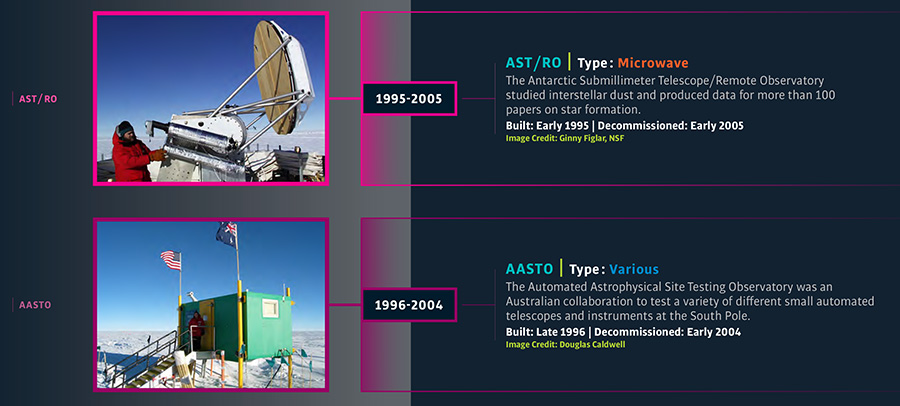A Timeline of Telescopes at the South Pole
Terri Edillon
NSF Office of Polar Programs
The South Pole is one of the premier sites for astronomy. At more than 9,000 feet above sea level, the thin, dry air and six months of darkness during the polar winter make for ideal observing conditions.
For more than 40 years, astronomers have trekked to the bottom of the world to study the cosmos above. Numerous telescopes over the years have found a home at the South Pole. The harsh Antarctic climate can be tough on equipment, but despite subzero temperatures and winter storms, researchers working at the South Pole continue to conduct cutting-edge research.

The National Science Foundation (NSF) Office of Polar Programs (OPP) has released a “Telescopes of the South Pole Timeline.” From the first NSF-funded telescope in 1978 to the newest BICEP Array microwave telescope, it allows anyone to explore how astronomers have peered deep into space and back in time from one of the most isolated places on Earth.
The timeline is freely available as two PDFs:
- High-resolution poster for printing, 24 x 36 inches (4.9 megabytes)
- One-column version for easier scrolling and viewing on a screen (1.2 MB)
Questions about the timeline? Email the OPP communications team.

